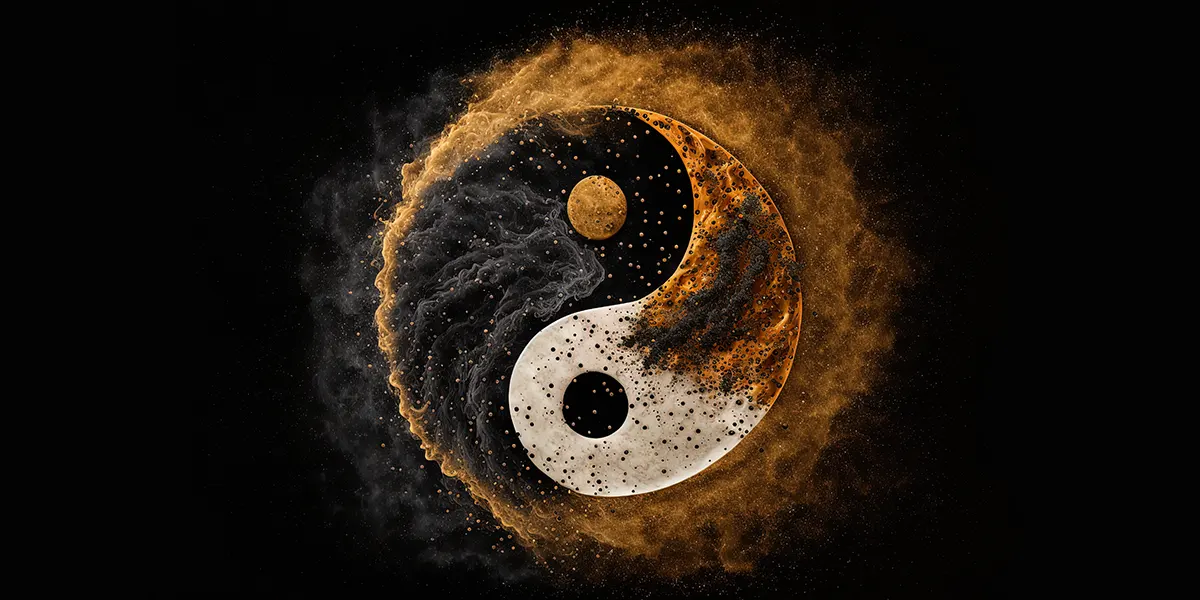Shiva and Shakti: Science and Vedic Wisdom in Harmony
When we look at the universe through the lens of modern physics, we see a reality that is far more subtle and fascinating than our everyday experience.

Table Of Content
- 1. What is Karma?
- 2. Types Of Karma
- 3. Break Free from Karma!
- 4. Spirituality and Karma
Shiva and Shakti: Science and Vedic Wisdom in Harmony
When we look at the universe through the lens of modern physics, we see a reality that is far more subtle and fascinating than our everyday experience. At the same time, the Vedas and Upanishads, the ancient texts of India, describe a universe built on the interplay of Shiva (pure consciousness) and Shakti (energy). Strikingly, science and Vedic wisdom converge in their description of reality.
Mass and Energy: Modern Physics Perspective
Einstein’s iconic equation, E=mc2E = mc^2E=mc2, tells us that mass and energy are two forms of the same reality. A tiny amount of mass can release an enormous amount of energy. This principle explains phenomena like:
- The Sun’s fusion: Hydrogen nuclei merge into helium because helium is more stable, and the mass lost in the process becomes vast amounts of energy—sunlight that sustains life on Earth.
- Nuclear reactions: Small changes in mass lead to huge energy releases.
- The early universe: Physics suggests that the universe started as pure energy, which later condensed into matter—mass is condensed energy.
The speed of light ccc in E=mc2E = mc^2E=mc2 is more than just “light.” It is the cosmic conversion factor that governs how mass transforms into energy and vice versa. Even in total darkness, mass contains tremendous energy—latent, potential, waiting to manifest.
Shiva: The Observer, the Pure Consciousness
In Vedantic philosophy, Shiva represents pure consciousness, the unchanging witness behind all existence. Science mirrors this in its recognition of energy as potential, the unseen capacity behind all matter. Just as mass holds latent energy even when not in motion, consciousness is the underlying reality of all phenomena, untouched by their transformations.
Shakti: Energy in Action
Shakti is the dynamic force, the energy that manifests the universe. From a scientific viewpoint:
- The fusion of hydrogen into helium is the universe expressing Shakti—latent energy in matter transforming into radiant light.
- The creation of particles from energy in the early universe is Shakti in its purest, unbounded form.
- Every force, motion, and vibration we observe is Shakti—the dynamic unfolding of energy in space-time.
The Union of Shiva and Shakti
Vedas describe the universe as Shiva-Shakti in union:
- Shiva (Consciousness): The still, eternal backdrop—the field of possibility.
- Shakti (Energy): The creative expression—the universe in motion.
Physics provides a modern metaphor:
- Mass and energy are two sides of the same coin.
- Energy is potential (Shiva) until it manifests (Shakti).
- Every physical transformation reflects this cosmic interplay.
Conclusion
Science may explain how the universe works, but Vedic texts describe why it exists in the first place. Where physics talks of mass, energy, and light, the Vedas speak of Shiva and Shakti. Both point to the same truth: the cosmos arises from potential and manifests through dynamic energy, and consciousness—the witness—is the unchanging reality that observes it all.
In understanding both science and Vedanta, we glimpse a universe that is alive, intelligent, and profoundly interconnected—where Shiva and Shakti dance in eternal harmony.
